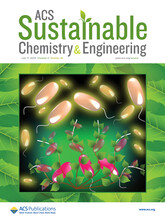Antibiotic resistance is a significant public health concern. The United Nations has estimated that drug-resistant diseases could be responsible for 10 million deaths a year by 2050. According to the Centers for Disease Control and Prevention, to handle antibiotic resistance, the United States spends about $55 billion every year. The challenge is not only the need of new kinds of antibiotic drugs, but we also need effective antimicrobial coatings and disinfecting solutions. This is because many drug-resistant infections originate from touch surfaces, healthcare equipment, and implants in hospitals as well as wastewater systems.
Scientists are working to develop new types of antimicrobials to address the problem and have had some success with synthetic materials, which are effective but often costly — and their use and disposal could harm the environment.
“If we can design low-cost, highly effective antimicrobials using green and eco-friendly materials, we can get the best of both worlds,” said Shudipto Dishari, Ross McCollum associate professor of chemical and biomolecular engineering.
The cover image of ACS Sustainable Chemistry and Engineering highlights the article by Shudipto Dishari and other authors.
With that mission, Dishari’s research is investigating how lignin, a naturally abundant polymer and a major element of plant cell walls, could be processed to make new antimicrobials. Her team’s findings, outlined in the American Chemical Society’s Sustainable Chemistry and Engineering journal, are promising, and the work is now featured by the journal as a supplemental cover story.
In this work, Dishari’s team modified lignin from Norway spruce trees with quaternary ammonium, a positively charged functional group used to kill bacteria, viruses and mold. The modification was done in water which ensured green synthesis. The team then tested this lignin-derived antimicrobial, named QAL, on an antibiotic-resistant strain of E. coli causing urinary tract infections. The positively charged groups of QAL made it easy for the lignin to attack and disrupt the outer skin of bacteria which is net negatively charged.
“While antibiotic-resistant bacteria are smart enough to save themselves from the action of conventional drugs, they cannot protect themselves from the non-specific effects that QAL makes,” Dishari said.
As a result, the antibiotic-resistant bacteria die and cannot grow further when treated with QAL. At the same time, QAL demonstrated no significant toxicity against human embryonic kidney cells, indicating its potential for safe use.
Lignin is not only a major component of agricultural waste but also a byproduct of pulp and paper mills and biorefineries. Every year more than 100 million tons of lignin is produced worldwide, most of which is burned or discarded.
“By converting an untapped agricultural/process waste like lignin into value-added antimicrobials, we can significantly lower the expense of antimicrobial treatments and coatings in large-scale applications,” Dishari said. “From a broader perspective, sustainable, scalable production of low-cost, efficient antimicrobials from waste lignin can help to sustain pulp and paper industries, biorefineries and agricultural farms and support the bioeconomy.”
A member of Dishari’s team, graduate student Karen Acurio Cerda, said the findings underline what she remembers learning in the classroom.
“That nature already has figured out so many things, and we have to just pay attention to that,” Cerda said.
Although the research used lignin from Norway spruce, Dishari said this just opens up tremendous possibilities to combat antibiotic resistance with green materials.
“The chemical structure of lignin can vary depending on the plant source, but we are up to embracing this challenge as an exciting opportunity to play with lignin chemistry and design a wide range of antimicrobials with high efficacy,” Dishari said.
Other members of Dishari’s team, and paper co-authors, are Karen Acurio Cerda, Mark Kathol and Ehsan Zamani, graduate students in chemical and biomolecular engineering; Rajib Saha, Richard L. and Carol S. McNeel Associate Professor of chemical and biomolecular engineering; Gunjan Purohit, postdoctoral research associate in biochemistry; Oleh Khalimonchuk, Susan J. Rosowski Professor of biochemistry; and Martha D. Morton, research professor of chemistry.


